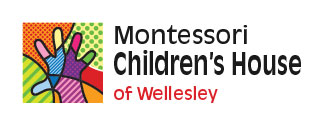Our Curriculum
The Montessori preschool curriculum is divided into four primary areas and several secondary areas:
Practical life
Also known as “Everyday Living Skills,” Practical Life activities capitalize on the natural desire of children to learn real-life skills and become capable, independent community members. This area of the curriculum also focuses on building fine motor skills and preparing small hands for writing.
Sensorial
Young children learn through their senses, absorbing information through touch, taste, smell, sight and sound. Dr. Montessori created a series of sensory learning materials that form the core of all Montessori preschool classrooms to this day. Each activity isolates a single sensory experience, allowing children to absorb information and process critical impressions.
Math
Two and three year olds indirectly explore math concepts through sensory activities like matching, sorting, forming patterns and building shapes. Around age four, a mathematical awakening occurs when children begin to ask about quantity. “How many can I have?” This marks a child’s readiness to use the math materials. Abstract concepts are made concrete through hands-on materials. There is no rote memorization of facts. Instead, children “play” with the materials in a way that creates sensory impressions of seemingly advanced concepts like squaring, cubing and multiplication. This is one area of the Montessori curriculum where seeing is believing.
Language
Reading and writing experiences should happen as soon as a child expresses interest. The challenge is offering information and materials that are developmentally appropriate. Montessori program have always used phonics-based reading instruction—a process validated by current research and endorsed by quality schools across the nation who are rushing to put back in place this form of reading instruction. Montessori language materials allow enthusiastic young readers and writers to take off as soon as they are independently trying to obtain the skills.
Social Skills
Social skills extend beyond cooperative playground behavior and sharing toys. Critical life skills like self-regulation, identifying emotions, perspective taking, delaying gratification, respectful behaviors and effective communication are fundamental goals woven into our curriculum.
Like Montessori classrooms all over the world, children learn specific techniques for problem solving, conflict resolution, and respect for their learning environment. Teachers offer tools and guidance, but children are empowered to find peaceful ways of living and learning together. Manners and courtesy lessons are given and modeled daily. Emphasis on skills like these is why Montessori schools are nicknamed the “peaceful classrooms.”
Those who stay for “lunch bunch” have further opportunities for developing SEL skills through group play and team building activities. Whether the children are building a fort, designing an obstacle course, putting on a play, or enjoying group games, the children learn group social skills with the support of trained teachers.
Geography
Using hands-on models, children at the preschool level have engaging experiences with land and water forms, planet Earth, and the world continents. This area of the curriculum is tied closely to World Cultures and Physical Science.
Science
Through hands-on materials, children work in the areas of botany, zoology and physical sciences. Unit topics rotate through a three-year cycle and include plants, trees, leaves, flowers, seeds, birds, frogs, butterflies, penguins, turtles, sea life, water, magnetism, color and the solar system.
Art & Music
Art is integrated into every facet of learning. Open-ended materials are available at all times. Structured projects support learning in science, culture, geography, math, and language. Each year, we learn about the life and works of one famous artist: Van Gogh, Matisse, or Picasso. Music and movement are also an important part of the program. Children experiment with rhythm instruments, bells and different genres of music. Music, movement and song support all curriculum areas.
World Cultures
Dr. Montessori lived through two world wars. These experiences influenced her work, leading her to believe that early education has a significant role to play in world peace. Through songs, pictures, stories, puzzles, art and physical models, children learn about the earth and the people who live on it. We invite our families to share their traditions and explore the different cultures of our school community and the world.
The Outdoors
MCHW uses a natural playground design where children are the moving parts. Elements from nature like tree stumps, hollowed logs, and "tree cookies" compliment our outdoor easels, musical instruments, sand box, water tables and garden beds. Along with our sports court and "truck pit," there's something for everyone. Children use our outdoor space to explore concepts in science, art, social skills, language...all areas of the curriculum. Most importantly, they have fun moving, playing games, and enjoying each other.

